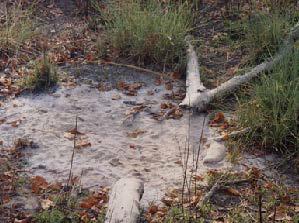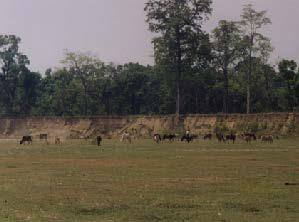Shova Thapa
Other projects
28 Oct 2015
The Benefits of Nature Conservation - Implications of Economic Instruments to Reduce Human-Wildlife Conflict in the Case of Three VDCs of Royal Bardia
The project aims to find out the impacts of incentive measures and management approaches used to resolve conflict between park and local community and to test the effective measures to resolve the threat to community through people’s participation in one of the most diverse national park of Nepal.

The project aims to find out the impacts of incentive measures and management approaches used to resolve conflict between park and local community and to test the effective measures to resolve the threat to community through people’s participation in one of the most diverse national park of Nepal.

With the difference in needs, resources utilization and the existing ethnic group, the project will focus on the role of incentive measures present in the project area, the role of institutions involved in implementing those incentive measure together with benefit sharing from the revenue generated from tourism and its impacts on the livelihood of community in Royal Bardia National Park, Nepal. In the process it will explore the main causes of ongoing park-people conflict and its impact on the biodiversity of the national park. In exploring the causes of conflict, the preliminary findings suggested that communities’ daily livelihoods need has not been met and trespassing the national park for fuelwood and fodder had been inevitable for them.It has been suggested that conflicts are the outcome of institutional failure and institutions act as mediator between human and natural resources. Thus, through institutional approach, this project plans to explore the institutions present in the area, the institutional arrangement for the biodiversity conservation and livelihood impact of the national park in the surrounding communities, thus covering the entire part of social-ecological system of the Royal Bardia National Park.
To understand the institutional role, conflict issues and livelihood impact, a first part of the field work was carried out in beginning of 200, where a combination of qualitative and quantitative approaches such as individual household questionnaire survey, semi-structured interview, community workshop, key informant interview, group discussions, vegetation analysis for level of resources used, participant observation and direct observation methods were used. The aim of using diverse methods was for a deeper understanding of the issues related with conflict and resource dependency in the national park and the impact on livelihoods. Data were collected from three Village Development Committees (VDC), Thakurdwara, Shivapur and Suryapatuwa VDC, falling within the Buffer Zone where most of the development projects have been concentrated such that a deeper analysis could be carried out and the case could be study in-depth.
The preliminary results of the research after initial data analysis suggested that there is a need to initiate the co-learning process for resource management among stakeholders of Royal Bardia National Park. With this co- learning process, the conservation managers and communities are brought together to design effective incentive measures in the verge of conflict, which completes the research project with appropriate recommendation in the development of required incentives for communities to save the biodiversity.
Research Goal
Promburom (2004) in the study of participatory watershed modelling found that the information obtained from personal interviews with local key informant and people from different institutions together with stakeholder analysis could not provide clear explanation on how certain specific situation emerged and exist, thus to acquire better understanding on the unclear behaviour of local resource user and manager, the role- playing game was designed to play with local stakeholders. The main aim of the second phase of the project is to locate and explore innovative adaptive and management strategies for resource conservation, which complements the first phase of the project and is also the important part of the research project.